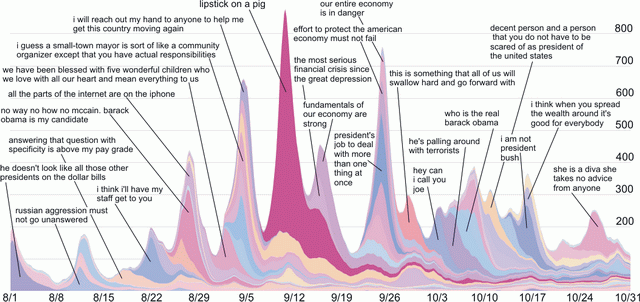Last Thursday I had the pleasure of talking about Say Everything with Michael Krasny on KQED’s Forum. I don’t think I fully infected Michael with my enthusiasm for bloggers and their place in our culture, but I was grateful for the rare opportunity this show (and host) provides to dig really deeply into a subject over the course of an hour.
One of my arguments is that blogs — so long derided as trivial — are actually the format we employ today when we want to go deep into any subject or topic. Forum and blogs: separated at birth?
Here’s the audio from the show:


